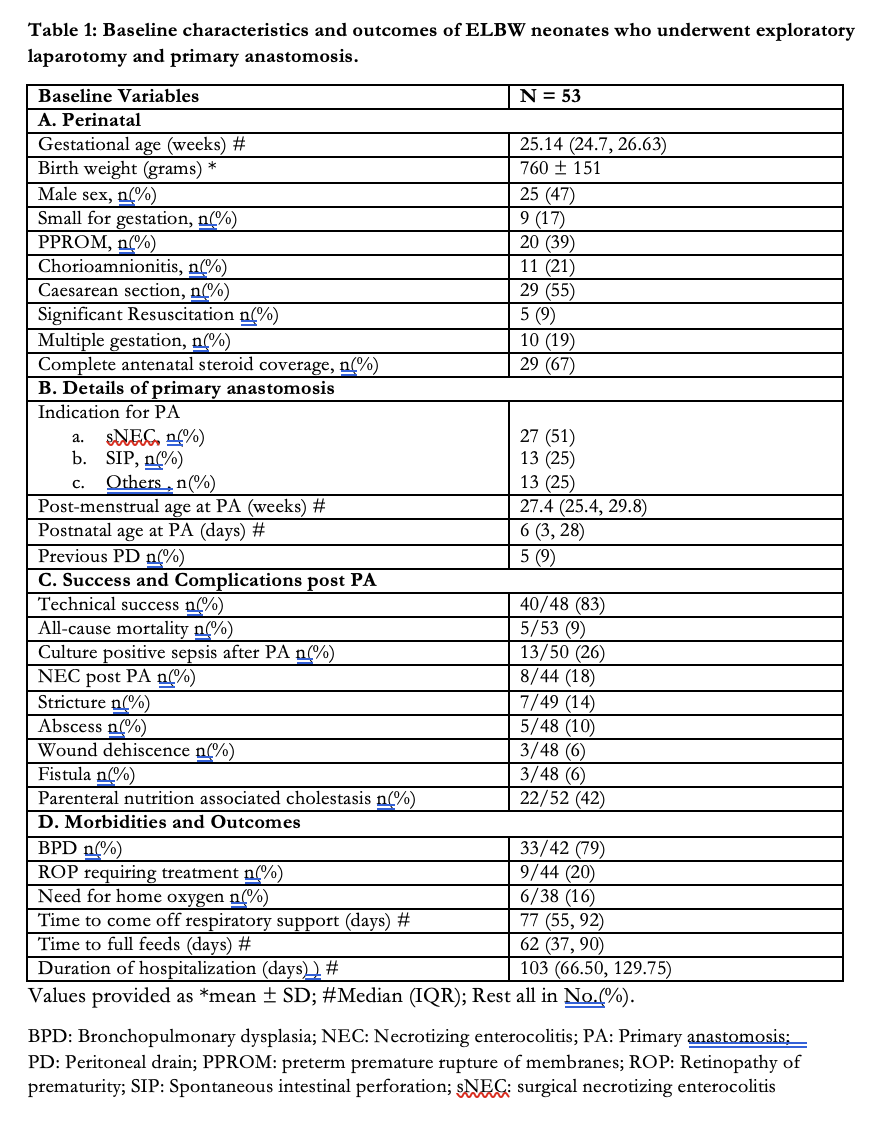Neonatology
Session: Neonatal GI Physiology & NEC 1: Necrotizing Enterocolitis
515 - Primary Anastomosis For Extremely Low Birth Weight Neonates With Surgical Intestinal Disorders: A Single Canadian Institutional Experience
Sunday, May 5, 2024
3:30 PM - 6:00 PM ET
Poster Number: 515
Publication Number: 515.2123
Publication Number: 515.2123

Ameya Kabra (he/him/his)
Student
University of Waterloo
Waterloo, Ontario, Canada
Presenting Author(s)
Background: Extremely low birth weight infants (ELBW) are at increased risk of surgical conditions of the gastro-intestinal tract including surgical necrotizing enterocolitis (sNEC) and spontaneous intestinal perforation (SIP). Primary anastomosis (PA) is increasingly being used as a definitive surgical management, though data in ELBW infants with regards to outcomes and complications are limited.
Objective: To describe the outcomes of ELBW infants undergoing PA for surgical intestinal disorders.
Design/Methods: We conducted a retrospective cohort study of ELBW infants with surgical intestinal disorders who underwent PA in a quaternary neonatal intensive care unit between January 1, 2013 and December 31, 2022. The primary outcome was technical success defined as no need for laparotomy post PA and secondary outcomes included rate of complications including stricture, fistula, abscess, wound dehiscence, rates of cholestasis, post procedure NEC, culture positive sepsis and common neonatal morbidities. Data was expressed as median (interquartile range) or mean + SD for continuous variables and frequency (%) for categorical variables.
Results: Fifty-three ELBW infants with a median gestational age of 25.14 (24.7, 26.6) weeks and birth weight of 760 ±151 grams were included in the study. The baseline characteristics, details of PA, rates of technical success and complications, common neonatal morbidities and outcomes are outlined in Table 1. The common indications for PA included sNEC in 27 (51%) and SIP in 13 (25%). The mean postmenstrual age at presentation was 27.4 (25.4, 29.8) weeks and post-natal age at procedure was 6 (3, 28) days. Overall technical success was 83%.
Conclusion(s): Primary anastomosis is a safe and effective procedure in ELBW neonates with surgical intestinal disorders. Adequately powered, prospective studies are warranted in this high-risk subset to further corroborate our local findings from a quaternary Canadian centre.

